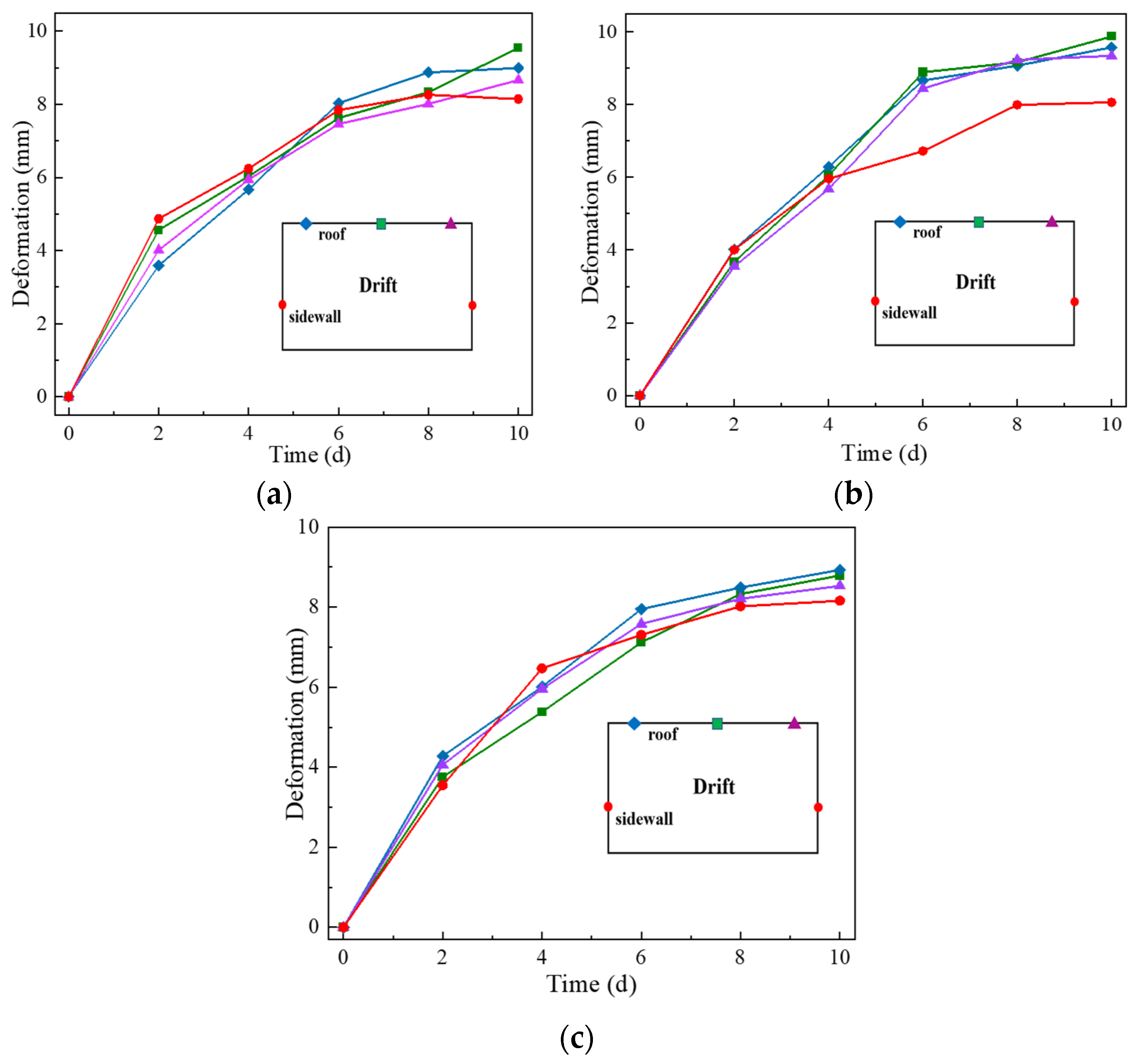Determination of the Required Strength of Artificial Roof for the Underhand Cut-and-Fill Mine Using Field Measurements and Theoretical Analysis
Abstract
:1. Introduction
2. Engineering Background
3. Field Engineering Measurement
3.1. Measurement Instruments and Principles
3.1.1. Measurement of Stresses in the CPB Roof
3.1.2. Measurement of Loads in the CPB Roof
3.1.3. Additional Instrument
3.2. Measurement Procedure
3.3. Measurement Results and Analysis
4. Theoretical Analysis
4.1. Establishment of the Thick Plate Mechanical Model
4.2. Calculation of the Stress
5. Comparison of Experimental and Theoretical Calculation Results and Determination of Required Strength
6. Engineering Application
6.1. Monitoring Scheme
6.2. Monitoring and Application Results
7. Conclusions
Author Contributions
Funding
Institutional Review Board Statement
Informed Consent Statement
Data Availability Statement
Conflicts of Interest
References
- Fu, J.; Wang, J.; Song, W. Damage constitutive model and strength criterion of cemented paste backfill based on layered effect considerations. J. Mater. Res. Technol. 2020, 3, 6073–6084. [Google Scholar] [CrossRef]
- Li, H.; Ji, K.; Tao, Y.; Tang, C. Modelling a Novel Scheme of Mining Geothermal Energy from Hot Dry Rocks. Appl. Sci. 2022, 12, 11257. [Google Scholar] [CrossRef]
- Xu, W.; Cao, P. Fracture behavior of cemented tailing backfill with pre-existing crack and thermal treatment under three-point bending loading: Experimental studies and particle flow code simulation. Eng. Fract. Mech. 2018, 195, 129–141. [Google Scholar] [CrossRef]
- Gao, T.; Sun, W.; Liu, Z.; Cheng, H. Investigation on Fracture Characteristics and Failure Pattern of Inclined Layered Cemented Tailings backfill. Constr. Build. Mater. 2022, 343, 128110. [Google Scholar] [CrossRef]
- Chang, Q.; Sun, Y.; Leng, Q.; Liu, Z.; Zhou, H.; Sun, Y. Stability Analysis of Paste Filling Roof by Cut and Fill Mining. Sustainability 2021, 13, 10899. [Google Scholar] [CrossRef]
- Qin, S.; Cao, S.; Yilmaz, E. Employing U-shaped 3D printed polymer to improve flexural properties of cemented paste backfills. Constr. Build. Mater. 2022, 320, 126296. [Google Scholar] [CrossRef]
- Feng, F.; Li, D.; Li, X.; Guo, Z.; Wang, S.; Chen, Y. Novel underhand cut-and-fill stoping method and mechanical analysis of overlying backfill. Int. J. Geomech. 2017, 7, 04017004. [Google Scholar] [CrossRef]
- Mitchell, R.J. Sill mat evaluation using centrifuge models. Min. Sci. Technol. 1991, 3, 301–313. [Google Scholar] [CrossRef]
- Keita, A.; Jahanbakhshzadeh, A.; Li, L. Numerical analysis of the stability of arched sill mats made of cemented backfill. Int. J. Rock Mech. Min. Sci. 2021, 2, 104667. [Google Scholar] [CrossRef]
- Hughes, P.B.; Pakalnis, R.; Hitch, M.; Corey, G. Composite paste barricade performance at Goldcorp Inc. Red Lake Mine, Ontario, Canada. Int. J. Min. Reclam. Environ. 2010, 2, 138–150. [Google Scholar] [CrossRef]
- Grabinsky, M.; Bawden, W.; Thompson, B. Required Plug Strength for Continuously Poured Cemented Paste Backfill in Longhole Stopes. Mining 2021, 1, 80–99. [Google Scholar] [CrossRef]
- Ma, S.-W.; Hu, J.-H.; Qin, Y.-G.; Ren, Q.-F.; Yang, D.-J. Bearing mechanism and thickness optimization of ore roof in bauxite stope. Trans. Nonferr. Met. Soc. China 2022, 1, 285–295. [Google Scholar] [CrossRef]
- Fan, W.L. Study and Application of the Artificial Roof Structure for Medium Thickness Steep Fractured Ore Mining. Ph.D. Thesis, Central South University, Changsha, China, 2013. [Google Scholar]
- Shang, X.Y.; Li, X.B.; Peng, K.; Xu, X. Optimization of drift in extremely fractured ore-body based on safety coefficient and reliability analysis. J. Cent. South Univ. 2016, 7, 2390–2397. [Google Scholar]
- Han, B.; Zhang, S.; Deng, J. Determining method of backfill strength for underhand drift cut-and-fill stoping based on reliability theory. J. China Univ. Min. Technol. 2006, 3, 372–376. [Google Scholar]
- Kuang, D.Y.; Zhou, Y.C.; Wan, C.C.; Liu, L.S.; Pan, G.H. Study on design parameters of artificial roof of downward drift mining method in Sanshandao gold mine. Nonferr. Met. 2021, 6, 99–103. [Google Scholar]
- Han, B. Reliability Analysis of Filling Body and Optimization of the Control of the Stope Pressure of the First Orebody in Jinchuan No. 2 Mining Area. Ph.D. Thesis, Central South University, Changsha, China, 2004. [Google Scholar]
- Ma, C.N. Research of the Mechanical Behavior and Function of Backfilling with Inderhand Cut-and-Fill Method in Jinchuan No. 2 Mine. Ph.D. Thesis, Central South University, Changsha, China, 2011. [Google Scholar]
- Wu, A.X.; Zhang, A.Q.; Wang, H.J.; Rong, K. The mechanical model for the paste false roof and finite element analysis. J. Min. Saf. Eng. 2017, 3, 587–593. [Google Scholar]
- Hua, X.Z.; Sun, H.H. Study on Main Parameters of Underhand Heading Filling with High-Water Content Tailings. J. China Univ. Min. Technol. 2001, 1, 101–104. [Google Scholar]
- Li, X.S.; Li, X.B.; Gong, Y.C.; Liu, Z.X.; Zhao, Y.Z. Mechanical model and stability analysis for long-span artificial roof with backfill. Ming Metall. Eng. 2018, 6, 23–28+38. [Google Scholar]
- Feng, F.; Huang, W.P.; Guo, Z.P.; Wang, Y.; Wang, E. Stability analysis of cemented filling roof under the condition of shallow downward single route type of roadway. J. Min. Saf. Eng. 2016, 6, 1089–1095. [Google Scholar]
- Zhao, G.Y.; Zhou, S.X. Determining safe thickness of roof in subsea mining based on thick plate theory. Chin. J. Geol. Hazard Control 2015, 4, 60–66. [Google Scholar]
- Jiang, H.G.; Yu, T.C.; Liu, G.S.; Yang, L. Strength requirement for cemented backfill in rectangular drift of underhand cut-and-fill mining in Maoping mine. Nonferrous Met. 2022, 3, 42–49. [Google Scholar]
- Fan, W.L.; Li, X.B.; Zhou, Z.L. Based on the theory of reliability of reinforced concrete false roof strength and reinforcement design research. Min. Metall. Eng. 2013, 4, 30–35. [Google Scholar]
- Han, B.; Ji, K.; Singsh, B.P.M.; Qiu, J.; Zhang, P. An Optimization Method for Mix Proportion of Wet-Mix Shotcrete: Combining Artificial Neural Network with Particle Swarm Optimization. Appl. Sci. 2022, 3, 1698. [Google Scholar] [CrossRef]
- Xiao, Y.L.; Han, B. Analysis on the drift stability of downward drift filling mining in Longshou mine. Min. Res. Dev. 2021, 8, 36–40. [Google Scholar]
- Kang, J.F.; Sui, C.E.; Zhang, X.T. Concrete Thermal Stress Analysis Based on Observational Data from Concrete Strain Meter. J. Exp. Mech. 2013, 1, 121–126. [Google Scholar]
- Zhu, Q.; Li, T.; Zhang, H.; Ran, J.; Li, H.; Du, Y.; Li, W. True 3D geomechanical model test for research on rheological deformation and failure characteristics of deep soft rock roadways. Tunn. Undergr. Space Technol. 2022, 128, 104653. [Google Scholar] [CrossRef]
- Tesarik, D.R.; Seymour, J.B.; Yanske, T.R. Long-term stability of a backfilled room-and-pillar test section at the Buick Mine, Missouri, USA. Int. J. Rock Mech. Min. Sci. 2009, 7, 1182–1196. [Google Scholar] [CrossRef]
- Guo, Z.P.; Feng, F.; Huang, R.F.; Wang, C.; Li, W.; Wang, E.Y. Study on mechanical behavior and stability of overlying backfilling body in single roadway drift stoping method. Met. Mine 2014, 4, 60–64. [Google Scholar]
- Gu, W.; Zhang, L.-Y.; Tan, Z.-X.; Deng, K.-Z. Study on roof stability of open backfilling based on elastic plate model. J. Min. Saf. Eng. 2013, 6, 886–891. [Google Scholar]
- Chen, Q.; Zhu, L.; Wang, Y. The carbon uptake and mechanical property of cemented paste backfill carbonation curing for low concentration of CO2. Sci. Total Environ. 2022, 852, 158516. [Google Scholar] [CrossRef]
- Chen, Q.; Sun, S.; Wang, Y. In-situ remediation of phosphogypsum in a cement-free pathway: Utilization of ground granulated blast furnace slag and NaOH pretreatment. Chemosphere 2022, 313, 137412. [Google Scholar] [CrossRef] [PubMed]
- Chen, Q.; Zhang, Q.; Wang, Y. Highly-efficient fluoride retention in on-site solidification/stabilization of phosphogypsum: Cemented paste backfill synergizes with poly-aluminum chloride activation. Chemosphere 2022, 309, 136652. [Google Scholar] [CrossRef] [PubMed]
- Pagé, P.; Li, L.; Yang, P.; Simon, R. Numerical investigation of the stability of a base-exposed sill mat made of cemented backfill. Int. J. Rock Mech. Min. Sci. 2019, 114, 195–207. [Google Scholar] [CrossRef]
- Yang, S.; Liu, J.; Zhang, Z.B. Study on the Extraction of Multi level Continuous I arge Rib Pillar and its Engineering Practice. Min. Res. Dev. 2021, 7, 1–8. [Google Scholar]
- Wang, J.; Qiao, D.P.; Li, G.T.; Liu, Y.H.; Zhang, X. Strength model and its application of downward drift filling roof based on thick plate theory. J. China Coal Soc. 2022, 3, 2. [Google Scholar]
- Cheng, X.S. Applied Theory of Plates and Shells; Shandong Science & Technology Press: Ji’nan, China, 1989. [Google Scholar]
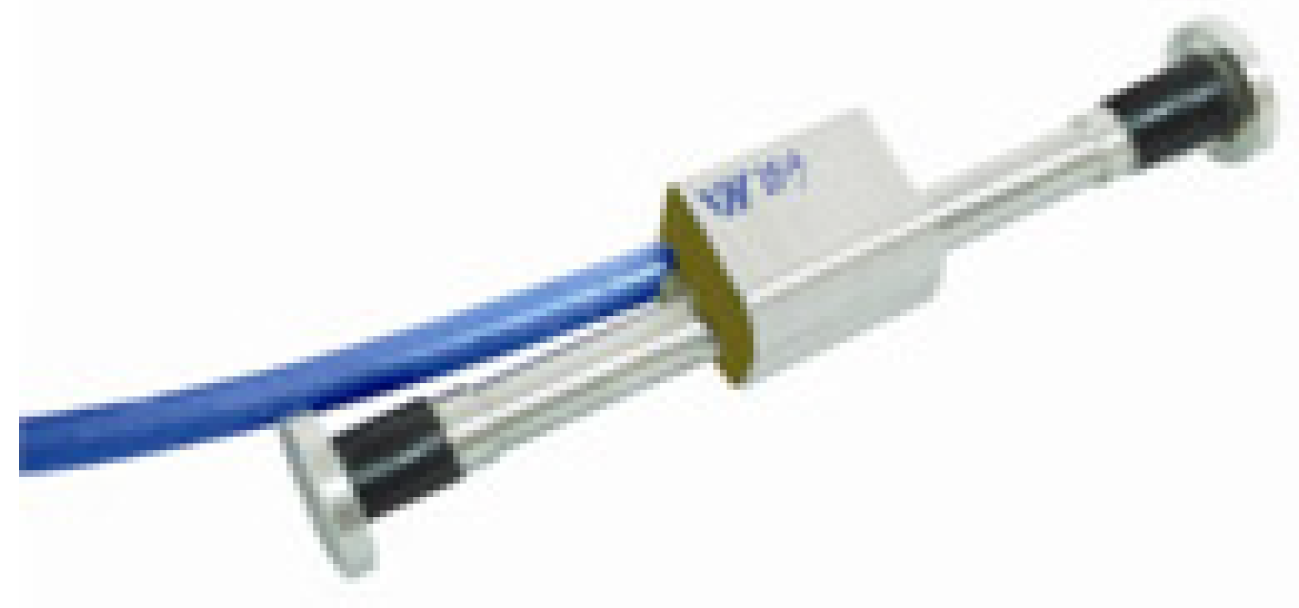
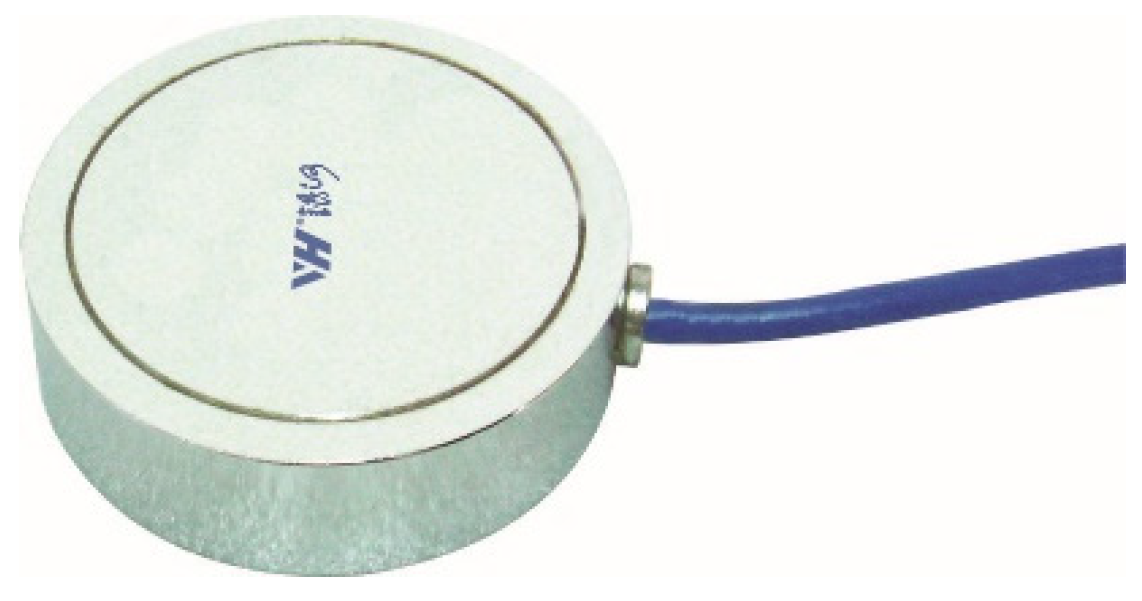
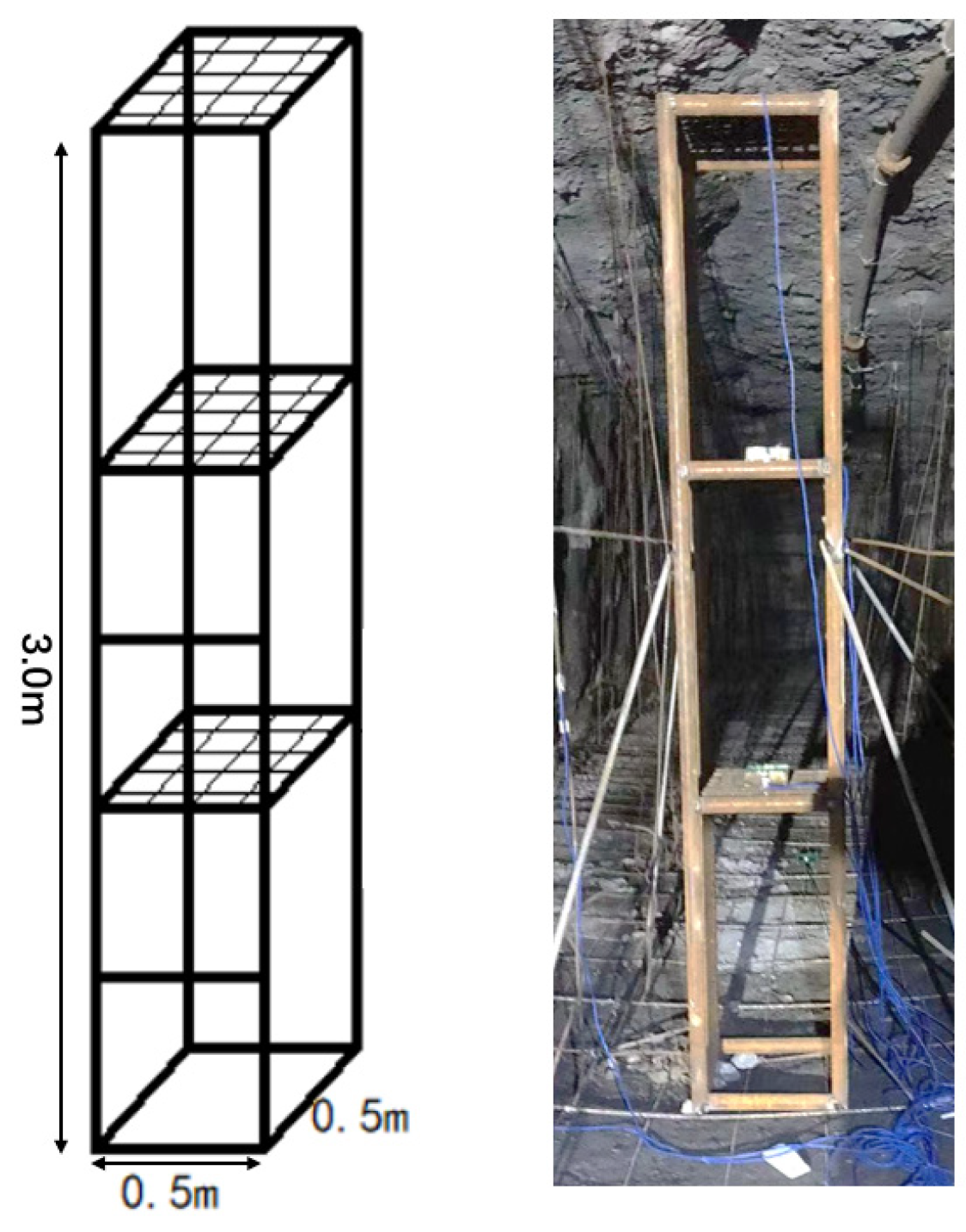


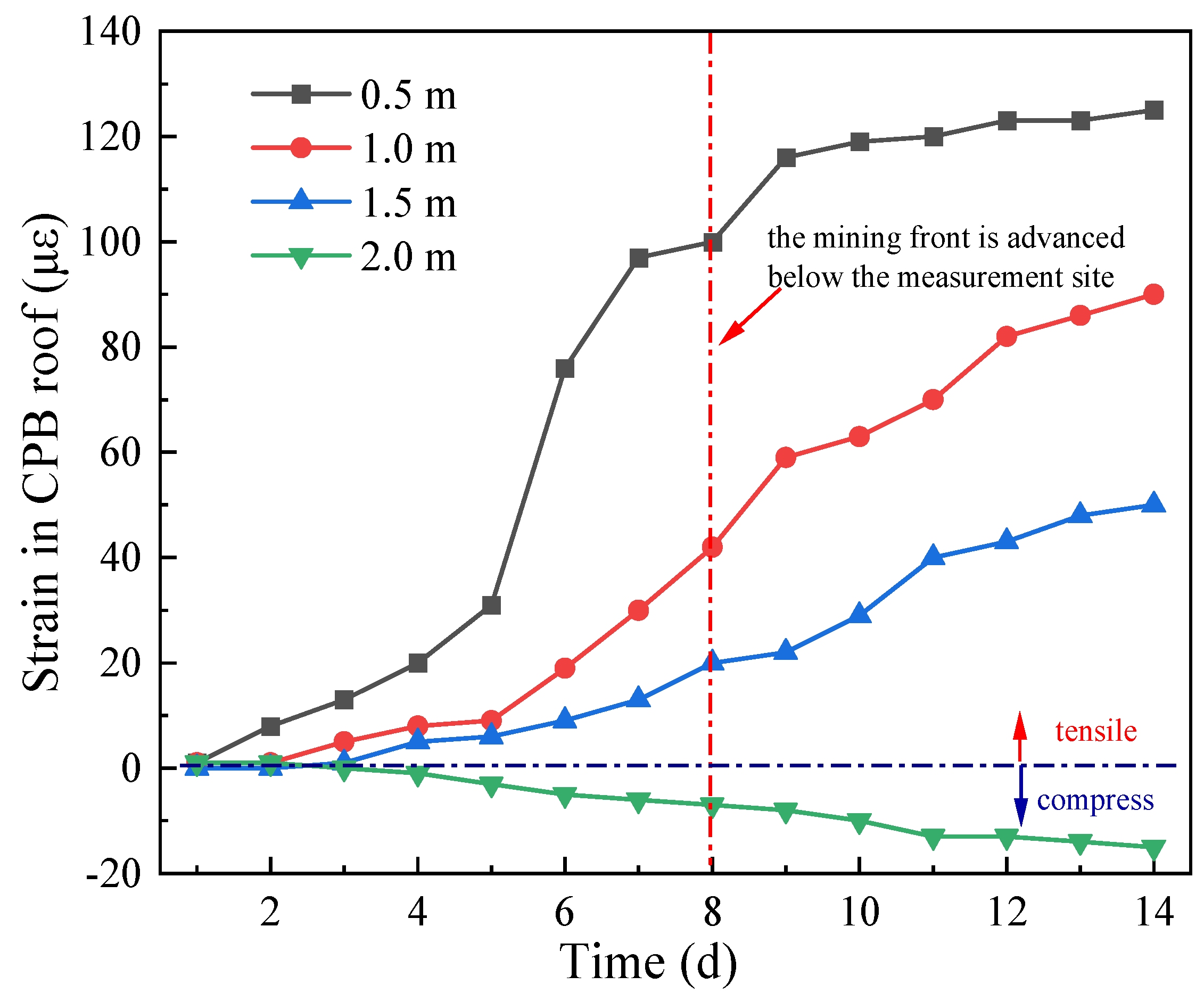
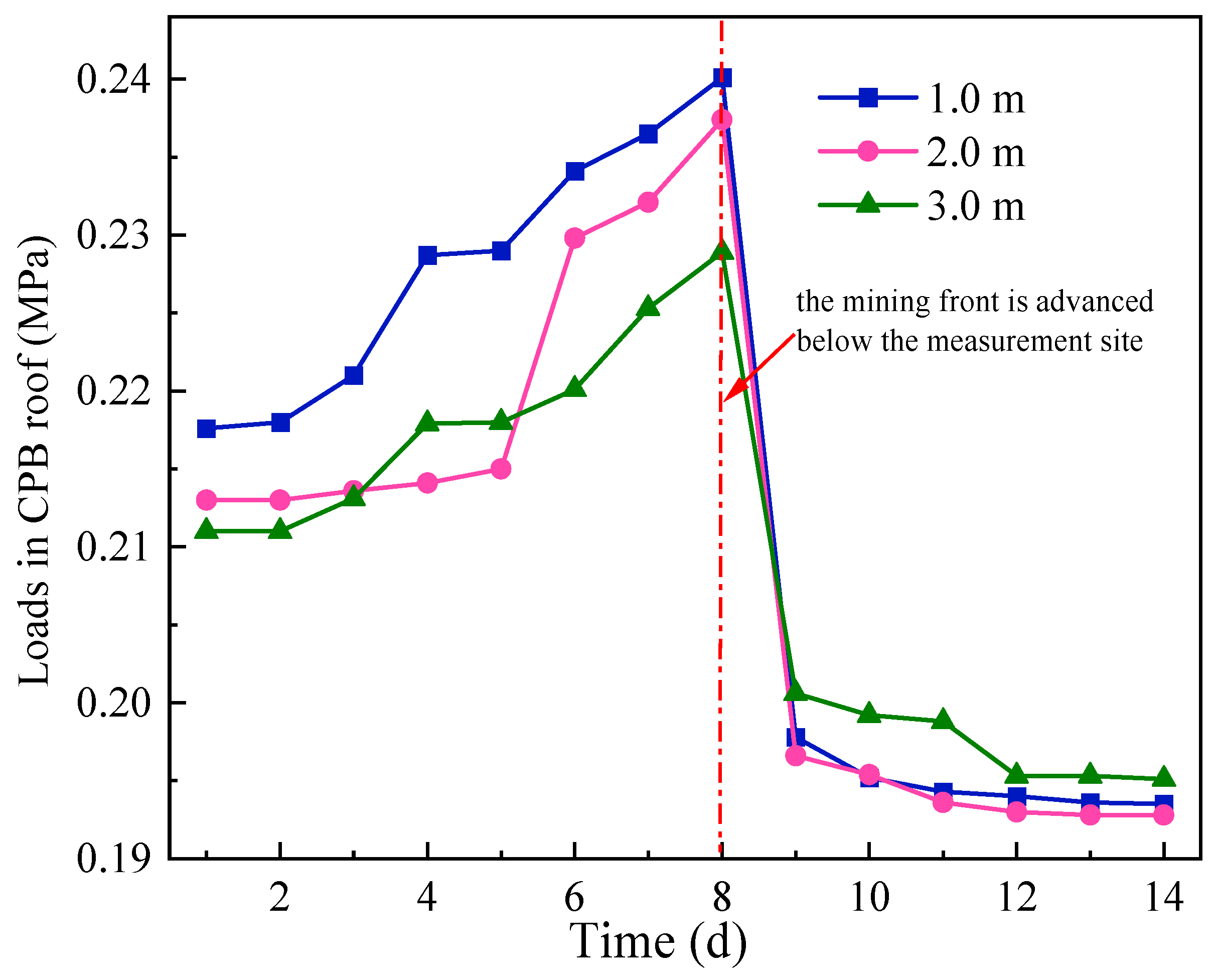
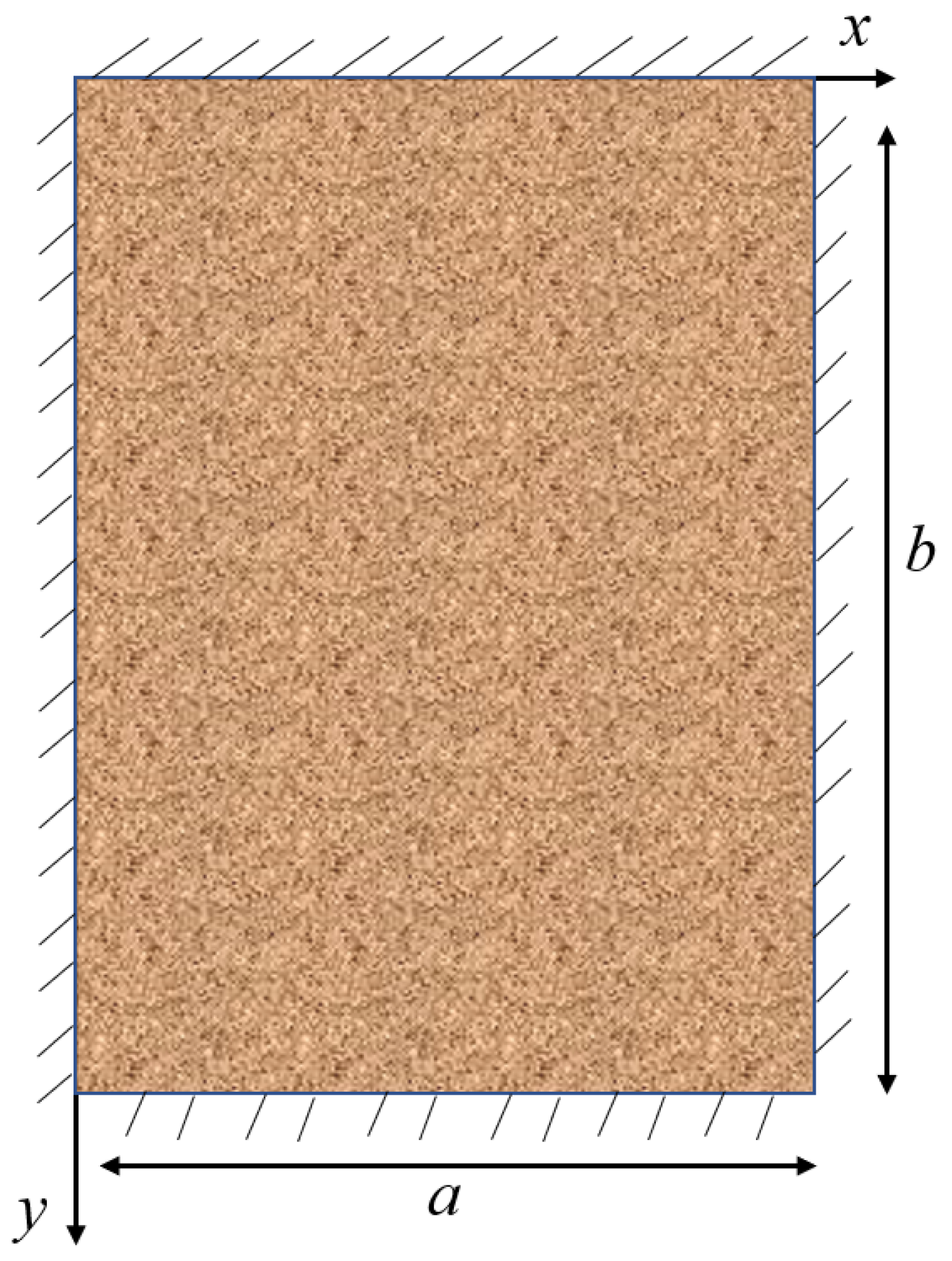


| Items | Height (m) | Span (m) | Length (m) | Poisson Ratio | Load (MPa) |
|---|---|---|---|---|---|
| Value | 4.0 | 5 | 35 | 0.21 | 0.240 |
Disclaimer/Publisher’s Note: The statements, opinions and data contained in all publications are solely those of the individual author(s) and contributor(s) and not of MDPI and/or the editor(s). MDPI and/or the editor(s) disclaim responsibility for any injury to people or property resulting from any ideas, methods, instructions or products referred to in the content. |
© 2022 by the authors. Licensee MDPI, Basel, Switzerland. This article is an open access article distributed under the terms and conditions of the Creative Commons Attribution (CC BY) license (https://creativecommons.org/licenses/by/4.0/).
Share and Cite
Han, B.; Ji, K.; Wang, J.; Wang, S.; Zhang, P.; Hu, Y. Determination of the Required Strength of Artificial Roof for the Underhand Cut-and-Fill Mine Using Field Measurements and Theoretical Analysis. Sustainability 2023, 15, 189. https://doi.org/10.3390/su15010189
Han B, Ji K, Wang J, Wang S, Zhang P, Hu Y. Determination of the Required Strength of Artificial Roof for the Underhand Cut-and-Fill Mine Using Field Measurements and Theoretical Analysis. Sustainability. 2023; 15(1):189. https://doi.org/10.3390/su15010189
Chicago/Turabian StyleHan, Bin, Kun Ji, Jiandong Wang, Shibo Wang, Peng Zhang, and Yafei Hu. 2023. "Determination of the Required Strength of Artificial Roof for the Underhand Cut-and-Fill Mine Using Field Measurements and Theoretical Analysis" Sustainability 15, no. 1: 189. https://doi.org/10.3390/su15010189
APA StyleHan, B., Ji, K., Wang, J., Wang, S., Zhang, P., & Hu, Y. (2023). Determination of the Required Strength of Artificial Roof for the Underhand Cut-and-Fill Mine Using Field Measurements and Theoretical Analysis. Sustainability, 15(1), 189. https://doi.org/10.3390/su15010189






